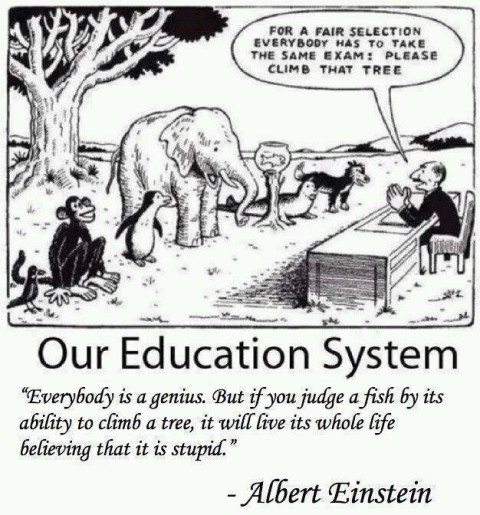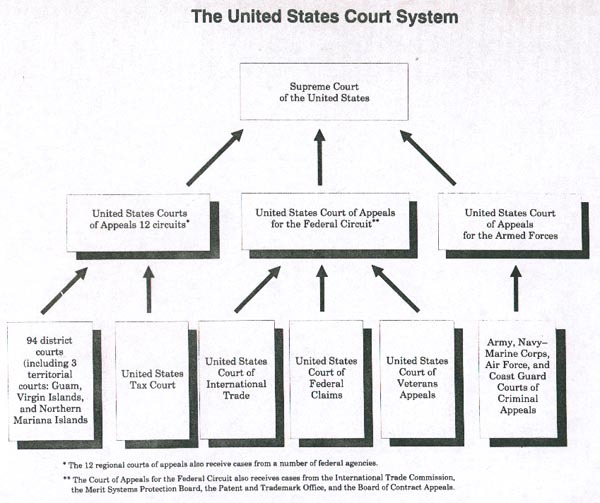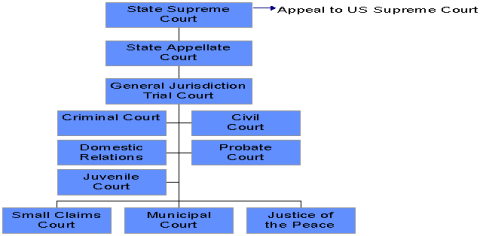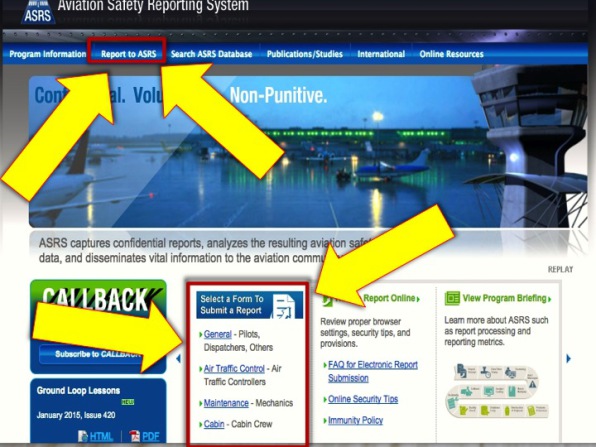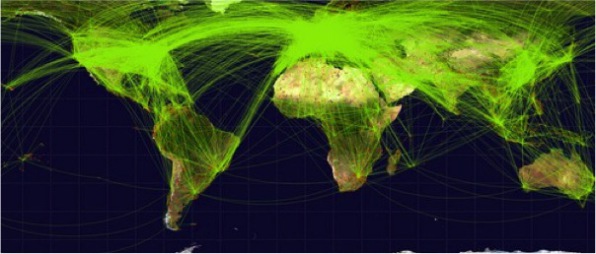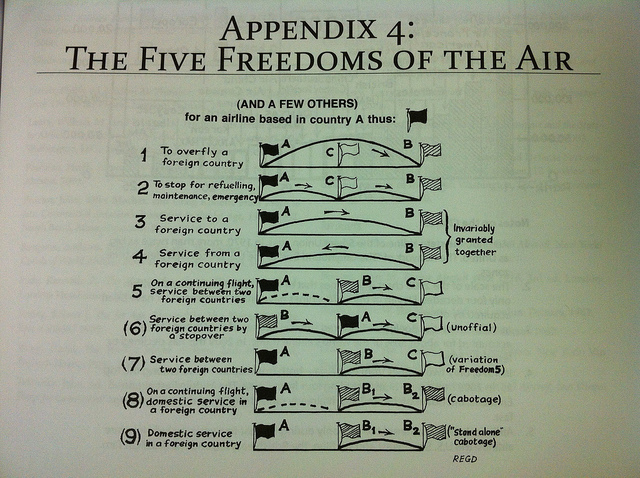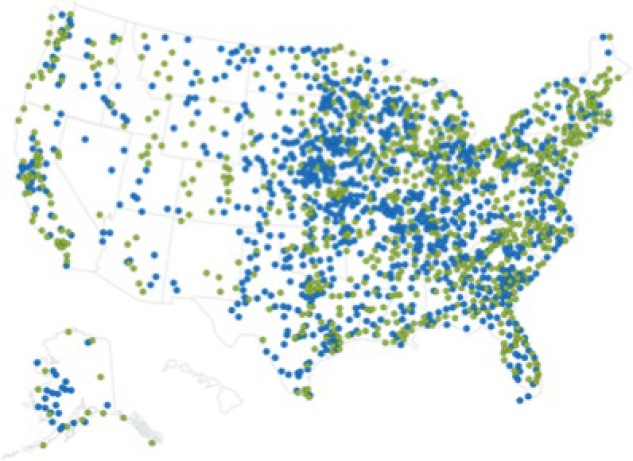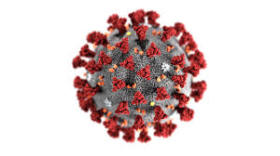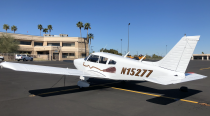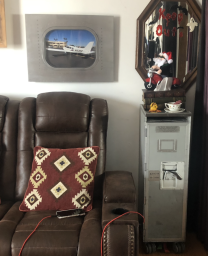
Agencies/Organizations
Jurisdiction: Court's power to hear a case - There are 2 types:
1. Subject Matter Jurisdiction: Court has authority to hear a particular type of case
2. Personal Jurisdiction: Court has legal authority over the defendant to require the defendant to stand trial, pay judgments, and the like.
Personal Jurisdiction generally exists if:
- Defendant is a resident of the state in which a lawsuit is filed; or
- Defendant files documents in court, e.g. answer to a complaint; or
- Summons is served on defendant (Summons is court's written notice that a lawsuit has been filed against defendant - must be delivered to the defendant when she is physically in the state in which lawsuit is filed); or
- Long-arm statute applies - when someone who does not live in a state but commits a tort, signs a contract, causes foreseeable harm, or conducts "regular business activities" there - minimum contacts - Due Process Clause - International Shoe Co. v. State of Washington
Appellate Courts: Higher courts which generally accept the facts provided by trial courts and review the record for legal errors.
Appellant: Party filing an appeal of the trial verdict
Appellee: Party opposing an appeal
Federal Courts: Established by US Constitution - limited jurisdiction - 2 kinds of cases:
Federal Question Case: Claim based upon US Constitution, federal statute, or federal treaty
Diversity Case: Lawsuit in which the plaintiff and defendant are citizens of different states AND the amount in dispute exceeds $75,000
Litigation
Pleadings: Documents that begin a lawsuit, consisting of a complaint, the answer, and sometimes a reply
Complaint: Pleading that starts a lawsuit - short statement of the facts alleged by the plaintiff, and her legal claims
Answer: Defendant's response to the complaint
Default judgment: Decision that the plaintiff in a case wins without going to trial
Class Action: Suit filed by a group of plaintiffs with related claims
Discovery: allows the two sides in a lawsuit to obtain documentary and other evidence from the opponent before trial - Parties are entitled to discover anything that could reasonably lead to valid evidence
Types include:
- Interrogatories: written questions that opposing party must answer, in writing, under oath
- Depositions: one party's lawyer questions the other party or witness (deponent), under oath
- Production of documents and things: each side may ask the other to produce for inspection and copying
- Physical and mental examination: if condition is relevant
Motion: formal request to the court
Pre-trial motions: Class Action and Summary Judgment
Motion to compel discovery: request to court for order requiring other side to answer discovery
Motion for a protective order: request to court, for good cause shown, where justice requires to protect a party from unreasonable annoyance, embarrassment, oppression, burden or expense
e-discovery: electronic discovery
Summary Judgment: Ruling that no trial is necessary because essential facts are not in dispute
Trial
Adversary System: based on the assumption that if two sides present their best case before a neutral party, the truth will be established
Jury Selection
Right to a jury trial: not always, but generally where money damages are involved (Judge's instructions)
Opening statements: summarize proof lawyer expects to offer, plaintiff going first
Plaintiff's Case
Burden of Proof: Obligation to convince the jury that a party's version of the case is correct
- Preponderance of the evidence: civil suit - plaintiff's version is slightly more likely than defendant's (51-49)
- Beyond a reasonable doubt: criminal case - government, or prosecution, must demonstrate the defendant is guilty beyond a reasonable doubt
Direct examination: when a lawyer asks questions of her own witness
Cross examination: when a lawyer asks questions of an opposing witness
Defendant's Case
Closing argument: both lawyers sum up their case
Deliberation
Verdict
Appeals
Precedent: earlier decisions by a court on similar or identical issues, on which subsequent court decisions can be based
Affirm: to allow a court decision to stand as is
Modify: to let a court decision stand, but with changes
Reverse and remand: to nullify a lower court's decision and return a case to trial
Reverse: to rule that the loser in a previous case wins, with no new trial
Constitutional Law
The Constitution is a series of compromises about power
Separation of Powers
To limit power - 3 branches (independent and equal) - each a check on the others
Federalism
Limited power - Congress has enumerated powers
Power Granted
Congressional power - Article 1 - creates Congress with 2 houses - Senate and House of Representatives
Interstate Commerce
Commerce clause: gives Congress the power to regulate commerce with foreign nations and among states
"The Congress shall have the power to regulate commerce with foreign nations, and among the several states."
Executive power - Article 2 - basic job of the President is to enforce the nation's laws
3 key powers:
Appointment - of heads of administrative agencies
Legislation - propose bills to Congress - veto power
Foreign policy - conducts nation's foreign affairs - treaties - Commander in Chief of Armed Forces
Judicial power - Article 3 - creates Supreme Court - permits Congress to establish lower courts within federal court system
Federal courts - 2 key functions
- Adjudicating cases: criminal and civil cases
- Judicial review: power of federal courts to declare a statute or governmental action unconstitutional and void
Protected Rights
1791 - Bill of Rights - first 10 Amendments added to Constitution
First Amendment: guarantees rights of free speech, free press, and religion - "Congress shall make no law... abridging the freedom of speech..." - Government may regulate the TIME, PLACE, and MANNER of speech - speech includes symbolic conduct
Fourth Amendment: protects against illegal searches
Fifth Amendment: ensures due process - Due Process and the Takings Clause - "No person shall be ... deprived of life, liberty, or property without due process of law; nor shall private property be taken for public use, without just compensation."
Procedural due process: ensures that before the government takes liberty or property, the affected person has a fair chance to oppose the action - the type of hearing the government must offer depends upon the importance of the property or liberty interest
The Takings Clause: prohibits a state from taking private property for public use without just compensation - A regulation that denies all beneficial use of property is a taking and requires compensation
Sixth Amendment: demands fair treatment for defendants in criminal prosecutions
Fourteenth Amendment: guarantees equal protection of the law - "No State shall ... deny to any person within its jurisdiction the equal protection of the laws."
The Equal Protection Clause: requires that the government must treat people equally - regulations based on gender, race, or fundamental rights are generally void
Statutory Law
Statutes: Laws passed by Congress or state legislatures
Bill: A proposed statute
Common Law
Judge-made law - legal precedents created by appellate courts - common law evolves in awkward fits and starts because courts attempt to achieve two contradictory purposes: predictability and flexibility
Stare decisis: "let the decision stand" - describes a court's tendency to follow earlier cases - once a court has decided a particular issue, it will generally apply the same rule in future cases
Bystander Rule: The common-law bystander rule holds that, generally, no one has a duty to assist someone in peril unless the bystander himself created the danger - courts have carved some exceptions during the last 100 years, but the basic rule still stands
Administrative Law
Administrative agencies, e.g. FAA, make rules - Congress creates federal administrative agencies to supervise many industries - agencies promulgate rules and investigate and adjudicate cases
Agencies promulgate 2 rules: Legislative and Interpretive
Legislative Rules: have full effect of a statute
Interpretive Rules: Agency's interpretation of what the law already requires
Investigation
Subpoena: An order to appear at a particular time and place
Subpoena duces tecum: requires the person to produce certain documents or things
Adjudication
Adjudicate: to hold a formal hearing about an issue and then decide it
Administrative Law Judge: (ALJ) An agency employee who acts as an impartial decision maker
FRCP
Federal Rules of Civil Procedure
FAA
Federal Aviation Administration
FARs - Federal Aviation Regulations - more appropriately - CFRs - Code of Federal Regulations
National authority on civil aviation in the United States
Created in 1958
Became a part of the Department of Transportation in 1966
ADs
ACs
AIS
Aeronautical Information Services Groups
AIP
William J. Hughes Technical Center
ICAO
International Civil Aviation Organization
Adobe Acrobat document [2.1 MB]
Adobe Acrobat document [432.4 KB]
International Air Transport Association
Transport Security Administration
May 2024 - TSA announces the publication of the Flight Training Security Program Final Rule
Department of Homeland Security
Transportation Security Oversight Board
AIR TRANSPORTATION SAFETY & SYSTEM STABILIZATION ACT
9.11.2001
- First foreign attack on American soil since Pearl Harbor
- Approximately 3,000 casualties
- World Trade Center: both towers destroyed by hijacked airliners
- Pentagon: airliner crashed into the Pentagon
- Shanksville, PA: hijacked airliner plummeted to the ground, no survivors
Domestic Unrest
- The attack was absolutely shocking to the American public
- Unprecedented act of terrorism through the use of commercial aviation
- Led to questions of airport security: could this have been prevented?
- Devastating loss of an American symbol as well as many lives
- The public and the U.S. government demanded immediate action
Signed into Action
- In response to the rage and widespread outcry, Congress acted quickly in drafting and passing this act
- On 9.12.2001, the Air Transportation Safety and System Stabilization Act (ATSSSA) was created
- This act was passed within 2 months - amazingly fast when compared to standard bills and acts
Intentions of ATSSSA
- Replace the private contractors in charge of security with airport employees
- Increase security as it pertains to all modes of transportation
- Restructure the government to provide for a layered security approach: have individual agencies responsible for specific aspects of safety to identify threats quickly and efficiently
Implementation of ATSSSA
- Created the Transportation Security Administration (TSA)
- Initially under the Dept. of Transportation but later moved to the Dept. of Homeland Security
- Gave the TSA authority to regulated security procedures at airports: Responsibilities include: checking and weighing baggage, reviewing passengers and supervising the check process
These employees were contractors that got rehired for the same job
- Developed a compensation program for victims of the attack
- Under DHS
- Started Transportation Security Oversight Board (TSOB)
Composed of seven members from various branches of the government
Meant to have security info shared across entities
Meant to stop security threats early
Make regulations that contribute to transportation safety
Compensation
- Between 2001 and 2003 accepted loan guarantees for a total of $1.179 billion seven different carriers
- Created Victims Compensation Fund for litigations related to the attack
- Also created fund for the victims of 9/11
- Tax Deferment
Core strengths and weaknesses of ATSSSA
- Private to Public Oversight for security issues
- Improved Aviation Security: standardized the checking process
- Proved Government’s investment in preventing future acts of Terrorism
- Some Airlines went bankrupt-not all airlines got loan guarantees
- Reaction to new invasive security checks by TSA: e.g. public outrage to full-body scanners
- General distaste for air-travel due to increased security
National Transportation Safety Board
Civil Aviation Medical Institute
National Aeronautics and Space Administration
Air Transportation Stabilization Board
National Labor Relations Board
US Immigration and Customs Enforcement
Occupational Safety and Health Administration
Aircraft Owners and Pilots Association
OPEN SKIES
Definition
- Open skies is a call for a loosening or removal of the rules and regulations of the international aviation industry
- The Open Skies Agreement aims to create a free-market environment for the airline industry
- By creating such an agreement, the two countries working together aim to minimize government intervention in regards to passenger transportation
How to enact
- To initiate an open skies agreement, countries must enact a bilateral air transport agreement.
- This agreement is a contract to liberalize aviation services between two countries
- This allows airlines of both countries to send off commercial flights that cover the transport of passengers and cargoes of both countries.
Bilateral versus Multilateral Air Transport Agreements
- In a bilateral agreement, the countries in agreement will allow the airlines of each country to bring passengers to a third country or pick up passengers from the host country to the home country of the airline or to a third country in which the contracting states has existing open skies agreement
- A multilateral air services agreement is the same as a bilateral one, but it involves three or more countries
The Origin of Open Skies
- Since the beginning of conquered lands, the quest for true sovereignty has been well sought after.
- To truly obtain it, land, sea, and air boundaries must be set, and anyone who crosses them will be considered a trespasser.
- Throughout history, many planes were shot down, ships sunk, and land vehicles demobilized, to prevent “invasion,” whether it was intentional or not.
- As international competition grew to be conducting the most major airline, countries began to have growing nationalism.
- As many airlines were either fully or partially owned by different countries governments, the need for resolution was upon the world.
- As tensions grew, a solution came about: the Open Skies Agreements.
Common Open Skies Provisions
Most of the existing agreements include the following:
- No restrictions on international route rights, number of airlines, capacity, frequencies, and types of aircraft
- A fare can be discontinued only if both governments can come to agreement
- Designated airlines may enter into leasing agreements with airlines of either country, or with those of third countries.
- Model text includes procedures for resolving differences that arise under the created agreement
- Air carriers may choose to operate under the charter regulations of either country
- Each government agrees to observe high standards of aviation safety and security, and to offer assistance when needed
- Allow an airline of one country to operate all-cargo services between the other country and a third country, via flights that are not linked to its homeland.
Recent United States Open Skies Agreements
- In 1992, a huge step was taken when the Netherlands signed the first open skies agreement with the United States, immediately creating precedent and standards for other countries.
- Prior to this agreement, each country had a limit to how many times they could land in another country, at a fixed location
- In 2001, the USA signed a multilateral agreement with Brunei, Chile, New Zealand, and Singapore.
Open Skies Agreements Today
Green lines represent the different flight paths of airlines throughout the world
CABOTAGE
Cabotage is defined as a non-remunerated not-for-hire flight between two points within a foreign country, carrying residents whose travel begins and ends in that country.
The overall purposes of cabotage rules are to prohibit foreign aircraft from one country traveling into another country and picking up foreign nationals or citizens of the other foreign country and providing transportation to and between points within that foreign country.
It does not matter if the aircraft is flying for hire or not for hire, either situation is generally not allowed.
Cabotage in the traditional sense, i.e. for hire, is almost universally prohibited.
Different countries have varying rules on cabotage, some allow it and others restrict it.
Although cabotage rules are different in various countries and usually incorporate the term "for hire," some countries do not allow even non-revenue passengers to be carried by a foreign aircraft within their boundaries.
In the United States any required exemption for approval of any foreign carrier or aircraft, (private, corporate or other), such approval is issued by the U.S. Department of Transportation under 49 U.S.C. 49109(g).
While the DOT can issue exemptions it is important to note, “Rights to such traffic are usually entirely denied or severely restricted.”
Qantas fined for cabotage by DOT
In a multi-billion dollar collaborative effort between the FAA and NASA’s Airspace Operations and Safety Program, the Next Generation Air Transportation System will make air travel much safer, more flexible, and efficient.
System Priorities
- Multiple Runway Operations
With updated standards, improved technologies, safety analysis and modifications with the air traffic monitoring system’s procedures will enable better runway access.
- Data Communication
Much like the FMS systems in use today, there will be less cockpit to controller audio messages. Using what is similar to texting, controllers can deliver clearances, coordinates, and commands
- Performance Based Navigation
To improve access and flexibility point-to-point, by finding ways to leverage upcoming navigation technologies, such as satellite-based Area Navigation and Required Navigation Performance.
- Surface Operations and Data Sharing
Most of the enhancements in this category, focus on increasing surface efficiency through animation as well surface surveillance to increase predictability and provide measurable and actionable improvements.
Localizer-Like Precision with Vertical Guidance (LPV)
- LPV infrastructure has been introduced to 1,686 airports
- 3,424 new LPV approaches nationwide
- Allows instrument pilots safe access to more airports in less than visual conditions
Automatic Dependent Surveillance-Broadcast (ADS-B)
- In preparation for NextGen, 634 new ADS-B ground stations have been erected nationwide
- Provides aircraft with traffic and weather information
- Increases safety due to better situational awareness in the cockpit
NextGen: Tactical Air Traffic Management
Super-Density Operations
The Aviation Systems Division identifies 3 specific uses of TATM:
1. Increasing Capacity using closely spaced approaches.
2. Maximizing the arrival rate by closely monitoring the spacing of aircraft during final approach.
3. Integrating departures and arrivals to fully utilize all runways
High Density En-Route Operations
The En-Route airspace is structured differently compared to Super-Density Airspace.
NextGen will focus on the use of Tactical Air Traffic Management automation in the aircraft and ground-based Air Navigation Service Provider system.
This system will provide conflict detection in the presence of uncertainty, and robust automated resolution logic. NASA is identifying innovative methods for using automation to enable separation assurance in the presence of a three times growth in traffic over the next few years.
In a similar manner, research is being conducted to identify technologies and procedures that would allow user preferred routing under certain traffic conditions.
For example, while on a flight and a pilot wishes to change the course and altitude because of turbulence or another non-planned event, the controller will be able to allow that if the system does not detect conflict with other traffic.
NextGen Weather Processor (NWP)
The NWP is the fully automated weather system, which will ID hazards en route and translate specific weather information relevant to flight operations up to eight hours in advance.
The new system will give controllers a smoother use of the airspace and be able to reduce delays.
Additionally, the system will give a current weather picture and will enable flights to be processed accordingly as specific weather conditions are known or predicted.
Aviation Weather Display
The new display is part of the NextGen Weather Processor (NWP).
It is a combination of multiple older weather products (Weather & Radar Processor, Integrated Terminal Weather System, Corridor Integrated Weather System) and will now allow for a more streamlined system.
With this new system, icing and turbulence products will be integrated with relevant radar data.
These changes create a new weather display that can be used “at a glance” for both terminal or en route users.
Future of Next Gen – ADS-B
Today
- As of 2014, 634 ADS-B ground stations completed nationwide
- Integrated into 22 of 24 en-route ATC facilities
- Airport Surface Detection System-Model X allows ATC to track surface movement of aircraft and ground vehicles
Future of ADS-B
- In 2016, the FAA plans to install three ADS-B ground stations in Mexico, improving coverage over the Gulf of Mexico
- The new stations would allow 5 NM aircraft separation compared to the current 100 NM requirement
- Implementation of new capability called In-Trail Procedures allowing for aircraft to safely climb or descend with separation reduced to 15 NM
Future of Next Gen – Data Comm
Today
- Data Comm allows controllers to send digital messages to pilots in the cockpit and allows the pilots to acknowledge the message
- Prototype Data Comm equipment used to provide pre-departure clearances as ongoing trials at Memphis and Newark Airports
- August 2015, the FAA achieved Initial Operating Capability for controller-pilot data link communications for tower services at Salt Lake City.
Future of Data Comm
- The FAA and the industry advisory group agreed to deploy Data Comm to towers at 56 airports by the end of calendar year 2016
- The FAA is encouraging the airline industry to equip additional Data Comm on flight decks
- The FAA is beginning the second phase, which will link aircraft in flight with 20 air route traffic control centers in the continental US by 2021, which will allow for airborne reroutes.
Cristina Zambrana - AOPA Dec 2021
FAA ADB-S opt out per 91.225
Wright Amendment
How Southwest Airlines Beat the Wright Amendment
How the Wright Amendment Actually Helped Southwest Airlines Succeed
The End of the Wright Amendment
Case 1: Ickes v. Federal Aviation Admin., 299 F.3d 260 (3d Cir. 2002)
14 CFR Part 103 - Ultralight Vehicles
Federalism and Preemption
- Express Preemption and the Supremacy Clause
Case 2: Northwest Airlines, Inc. v. Minnesota, 322 U.S. 292 (1944)
Case 3: Casey v. Goulian, 273 F. Supp. 2d 136 (D. Mass. 2003)
Massachussetts Superior Court in Middlesex County
- Implied Preemption: Conflict and Field
Conflict preemption: said to exist either when compliance with both the federal and state laws is a “physical impossibility,” or when the state law stands as an “obstacle” to the accomplishment and execution of the full purposes and objectives of Congress.
Field preemption: exists when a court determines that a federal regulatory scheme is so pervasive that Congress must have intended to leave no room for a state to supplement it. Courts generally understand field preemption to mean that federal law “thoroughly occupies” the “legislative field” in question, e.g., the field of aviation safety. Field preemption analysis comes up frequently before courts, particularly in the arena of aviation safety.
Case 5: Rowe v. New Hampshire Motor Transport Ass’n, 552 U.S. 364 (2008)
Contact Me
Sarah Nilsson, J.D., Ph.D., MAS
602 561 8665
You can also fill out my
Get Social with Me
Legal Disclaimer
The information on this website is for EDUCATIONAL purposes only and DOES NOT constitute legal advice.
While the author of this website is an attorney, she is not YOUR attorney, nor are you her client, until you enter into a written agreement with Nilsson Law, PLLC to provide legal services.
In no event shall Sarah Nilsson be liable for any special, indirect, or consequential damages relating to this material, for any use of this website, or for any other hyperlinked website.
Steward of
I endorse the following products
KENNON (sun shields)

